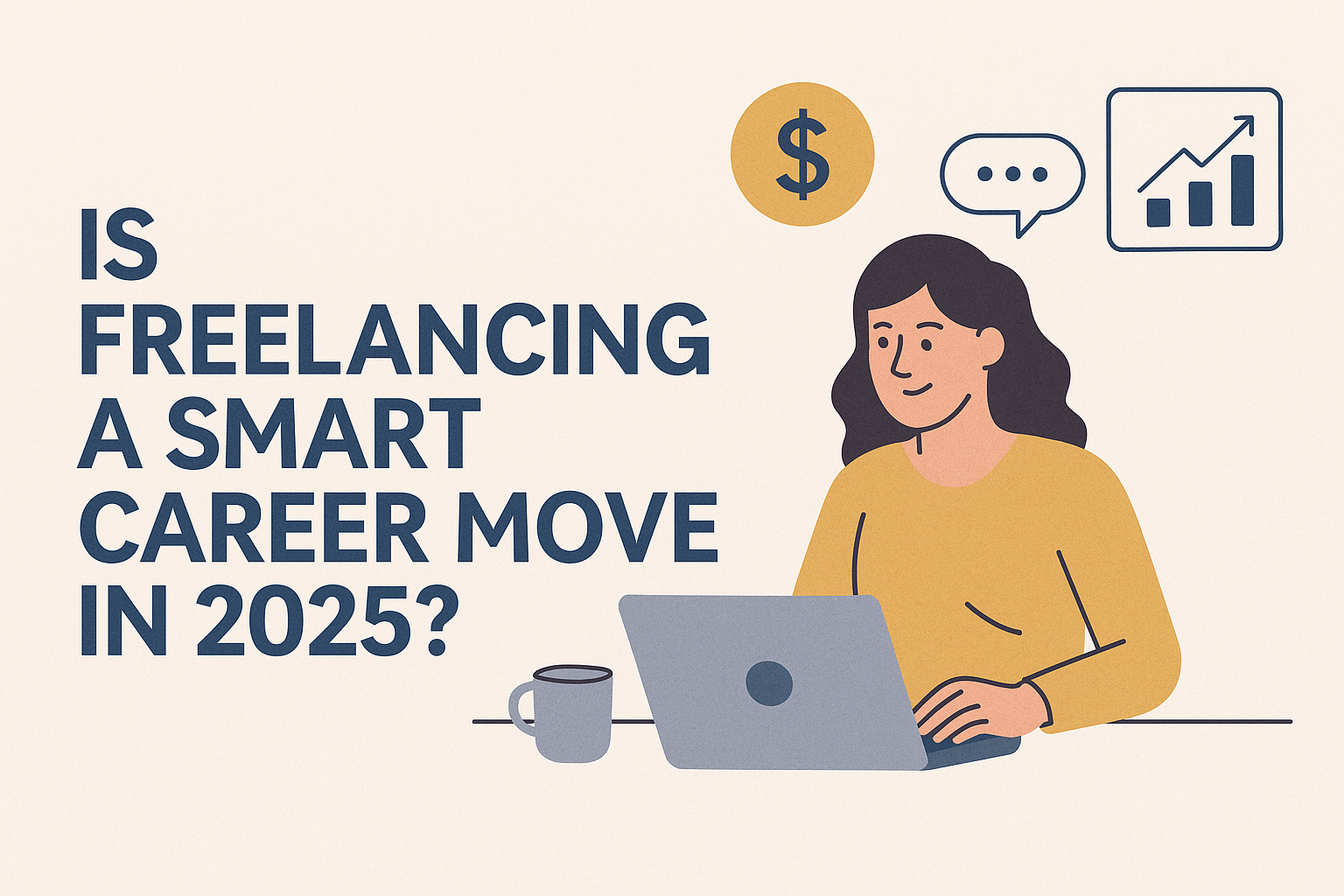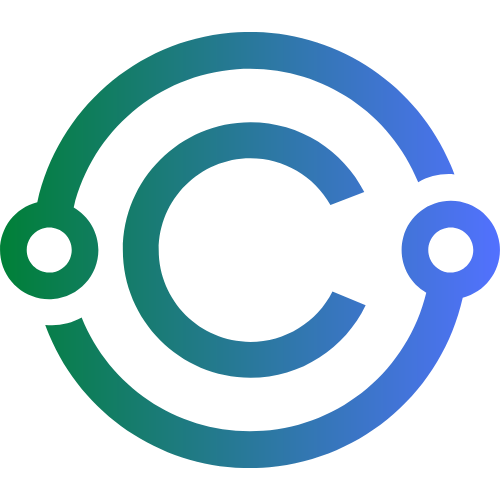Is Freelancing a Smart Career Move in 2025?

Freelancing has come a long way from being a stopgap between jobs or a side hustle to make extra income. In 2025, freelancing is no longer just an alternative—it’s a mainstream career path.
The gig economy is booming. According to Upwork's 2023 Freelance Forward report, over 60 million Americans freelanced in 2023 alone, and the number continues to grow globally. With more companies embracing remote work and on-demand talent, freelancing has become a legitimate, flexible, and even lucrative career choice.
But is it the right move for you?
In this blog post, we explore the pros, cons, earning potential, skill demands, and real-life experiences to help you decide if freelancing is a smart career decision in 2025.
1. The Rise of the Freelance Economy
Freelancing has been supercharged by:
- The shift to remote work
- Layoffs and corporate restructuring
- Advancements in digital tools
- The rise of AI, automation, and platform-based work
Top freelance fields in 2025 include:
- Software development
- Copywriting & content creation
- Graphic design
- Digital marketing
- Virtual assistance
- AI prompt engineering & automation setup
- Consulting (business, legal, HR, etc.)
Platforms driving this trend:
2. Benefits of Freelancing in 2025
a. Flexibility and Freedom
- Choose your hours, clients, and projects
- Work from anywhere (home, coffee shop, or beach)
b. Unlimited Earning Potential
- No salary cap
- Scale through value-based pricing, packages, and digital products
c. Skill Variety and Growth
- Exposure to diverse projects, industries, and challenges
- Opportunity to specialize or be a generalist
d. Better Work-Life Integration
- Build a schedule around your life (not the other way around)
- Time to travel, pursue hobbies, or spend with family
e. Portfolio Career Building
- Combine freelancing with teaching, consulting, writing, etc.
3. Challenges of Freelancing (And How to Handle Them)
a. Income Instability
- Irregular income and feast-or-famine cycles
Solution:
- Build a cash buffer (3-6 months)
- Diversify income streams (retainers, affiliate, products)
b. Client Acquisition
- Need to constantly find new work
Solution:
- Build a personal brand
- Use inbound marketing (LinkedIn, blog, newsletter)
- Network consistently
c. No Employer Benefits
- No health insurance, retirement plans, or paid leave
Solution:
- Set up your own benefits (self-employed plans)
- Budget for taxes, insurance, and time off
d. Self-Discipline Required
- No boss means no structure
Solution:
- Use tools like Toggl, Notion, and Google Calendar for productivity
4. Key Skills Freelancers Need in 2025
a. Marketing Yourself
- Writing a killer portfolio or case study
- LinkedIn content and cold outreach
b. Time Management
- Balancing client work, admin, and business development
c. Financial Literacy
- Invoicing, budgeting, pricing, and tax compliance
d. Communication and Client Handling
- Managing expectations
- Navigating feedback and revisions
e. Tech Adaptability
- Leveraging tools like AI, automation, and project management platforms
Bonus Toolkits:
- Moxie: CRM, invoicing, and contracts
- Canva: Design for non-designers
- Loom: Client communication videos
5. How Much Can You Earn as a Freelancer?
Freelancer income varies dramatically, but here are ballpark estimates in 2025:
Entry-level (0-1 years): $15-$35/hr or $500-$2,000/month
Mid-level (2-4 years): $35-$75/hr or $3,000-$7,000/month
Expert-level (5+ years): $75-$200+/hr or $8,000-$20,000+/month
Factors that impact income:
- Niche (tech > admin)
- Experience
- Positioning
- Marketing and negotiation skills
6. Freelancing vs Full-Time Job in 2025
| Feature | Freelancing | Full-Time Job |
|---|---|---|
| Income Control | ✅ Unlimited potential | ❌ Fixed salary |
| Flexibility | ✅ High | ❌ Low-medium |
| Benefits | ❌ Must self-manage | ✅ Provided |
| Job Security | ❌ Project-based | ✅ Usually stable |
| Growth Pace | ✅ Rapid if self-driven | ❌ Depends on org hierarchy |
| Learning Variety | ✅ High | ❌ Often role-limited |
7. Freelancing Myths to Ignore in 2025
- "Freelancers don’t earn much"
- "You must quit your job to start"
- "Only creatives can freelance"
- "You need a big social media following"
- "Clients only care about experience"
In reality, storytelling, communication, and proof of results often matter more than credentials.
8. How to Start Freelancing Today
Step-by-Step:
- Identify your skillset and niche
- Package your services (hourly, fixed, retainers)
- Build a simple portfolio website (use Carrd or Wix)
- Start networking and pitching (LinkedIn, Upwork, email outreach)
- Deliver quality, collect testimonials, and scale
Case Study: Nina’s Path to Full-Time Freelancing
Nina, 28, worked as a full-time digital marketer in the UK. In early 2023, she started freelancing on weekends to build extra income.
She picked a niche (email marketing for e-commerce) and built a 1-page site with testimonials. She cold-pitched 50 clients, landed 3, and then slowly built her roster.
By late 2024, Nina was making more freelancing than her salary. She quit her job and went full-time.
Now in 2025, she runs a boutique email agency, works 4 days a week, and earns 2x her old income. Her advice?
"Start small. Stay consistent. Don’t wait to feel 100% ready."
So, is freelancing a smart career move in 2025?
Yes—if you’re proactive, resourceful, and ready to treat it like a real business.
It’s not easier than a traditional job—but it can be far more rewarding in freedom, income, and lifestyle. And with remote work and AI tools making independent work even more accessible, now is a great time to get started.
Whether you freelance part-time, full-time, or as a stepping stone to entrepreneurship—2025 could be the year you take control of your career.
More from UJ+:
Subscribe to UJ+ for career guides, freelance resources, and weekly tips for building a flexible, future-ready career.

